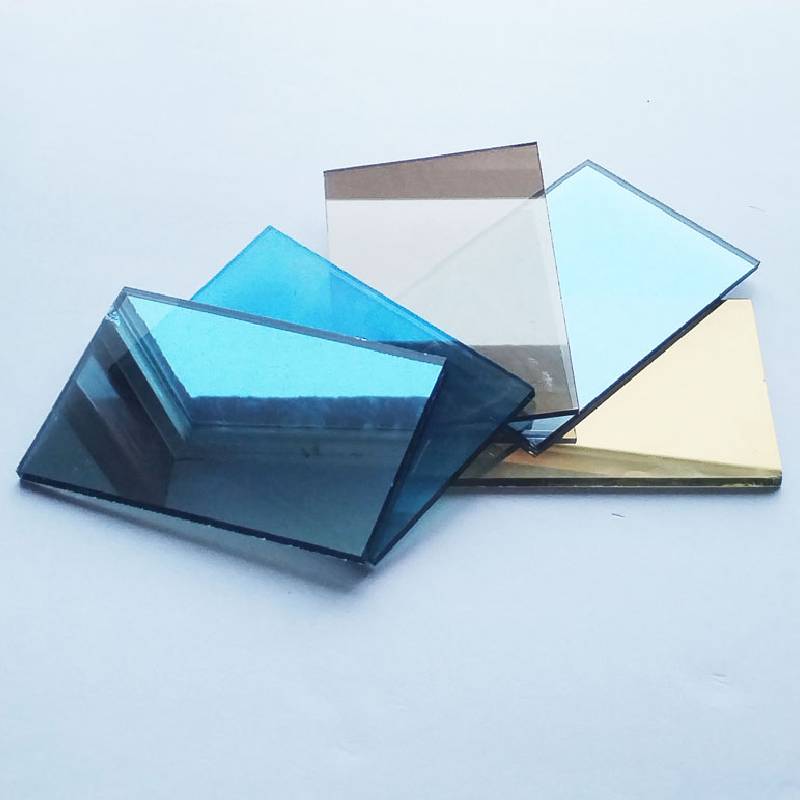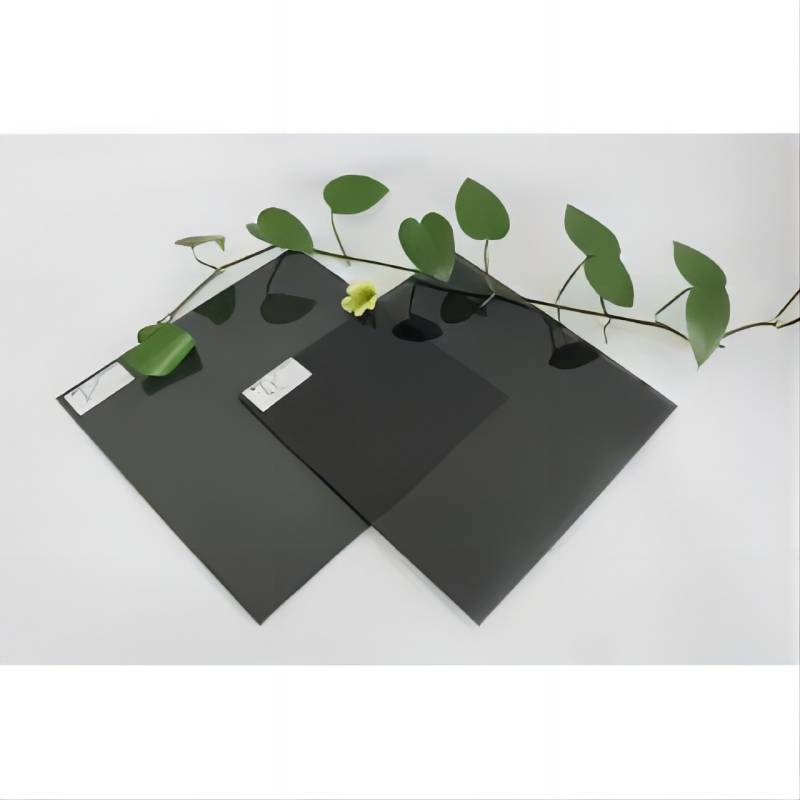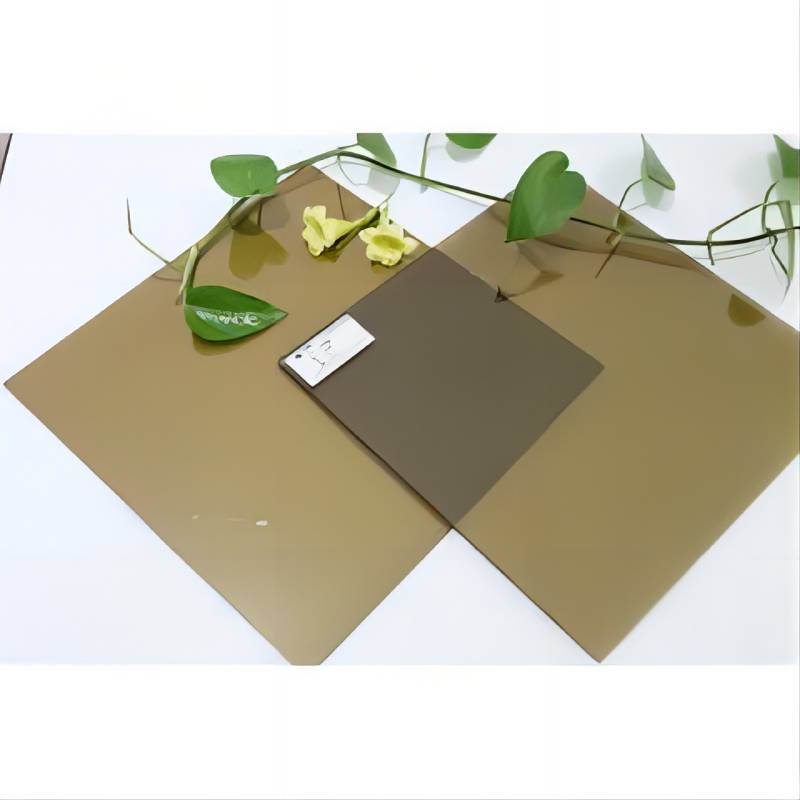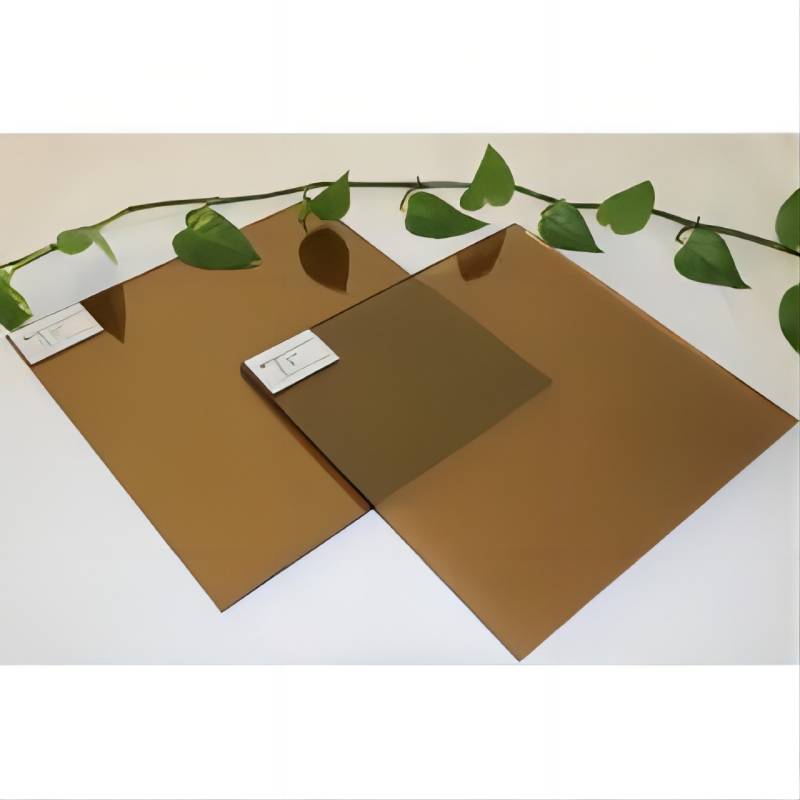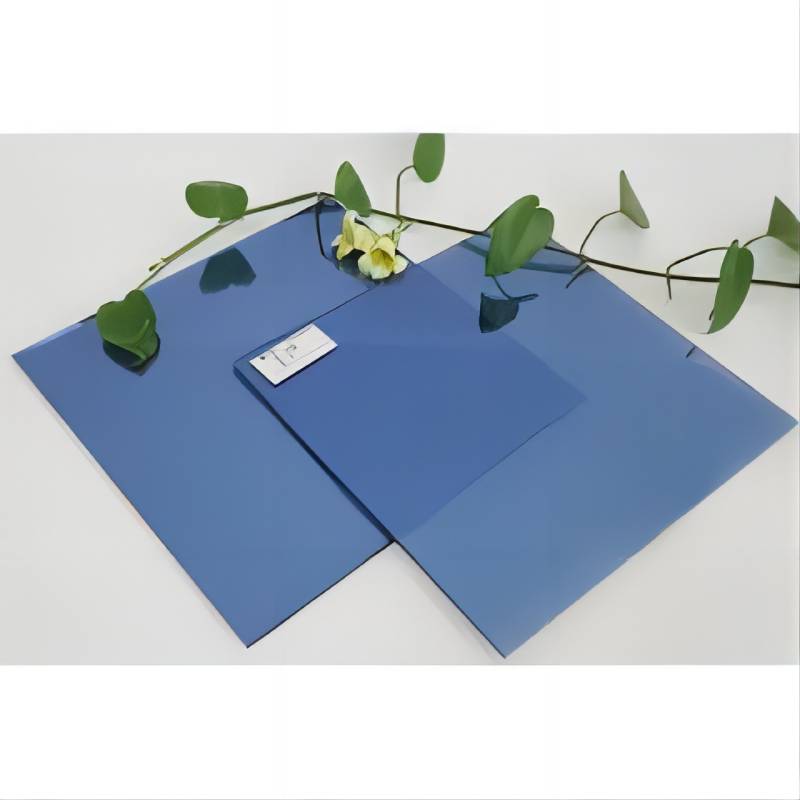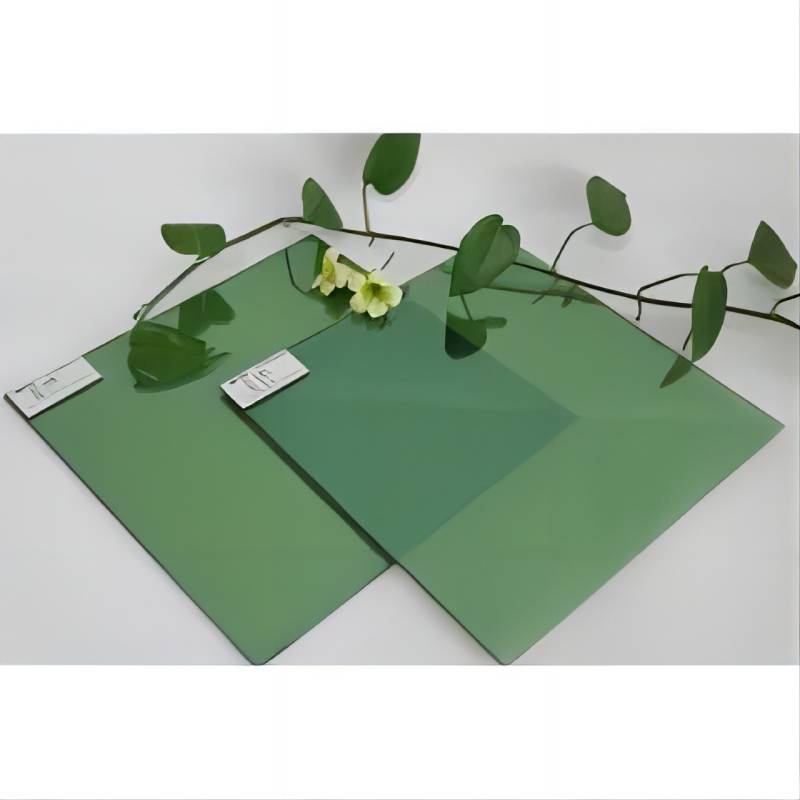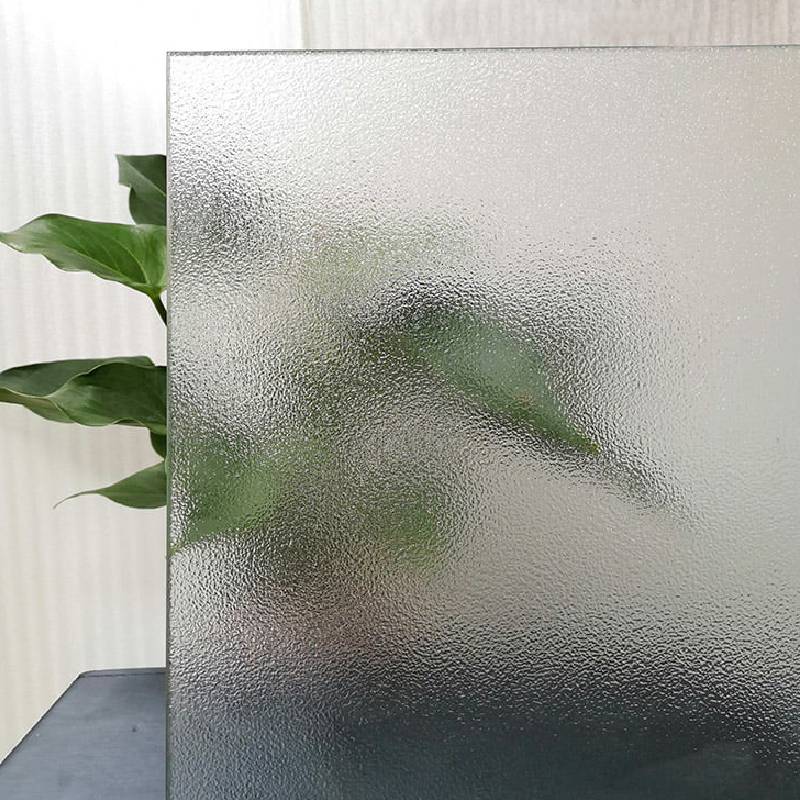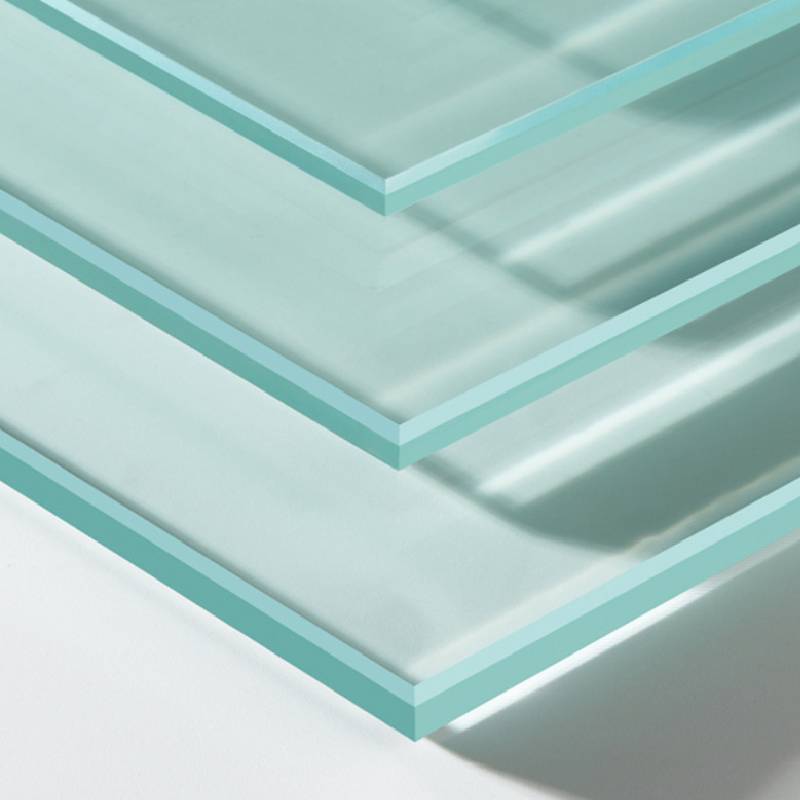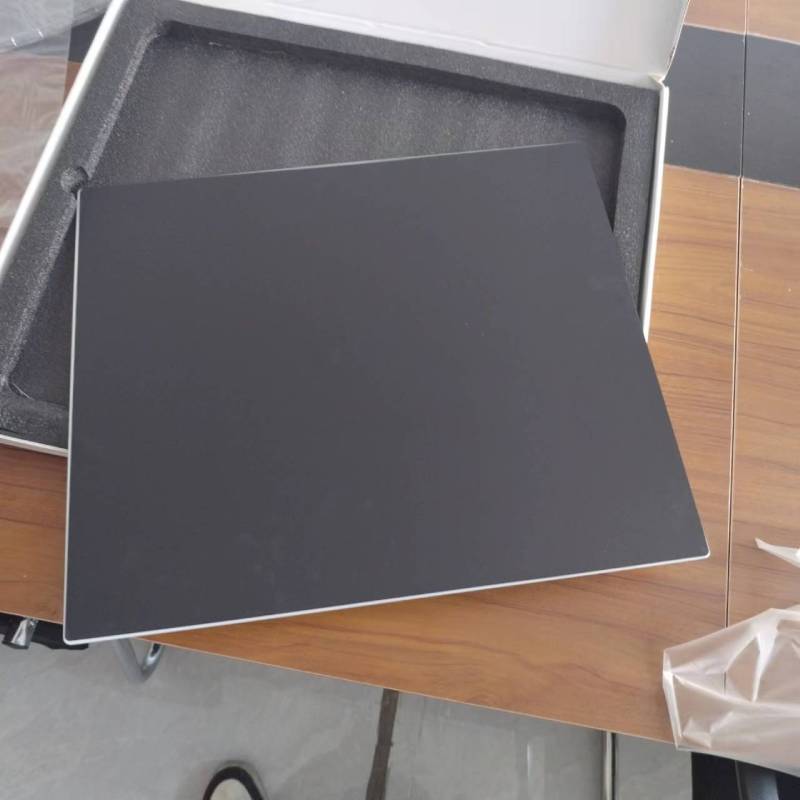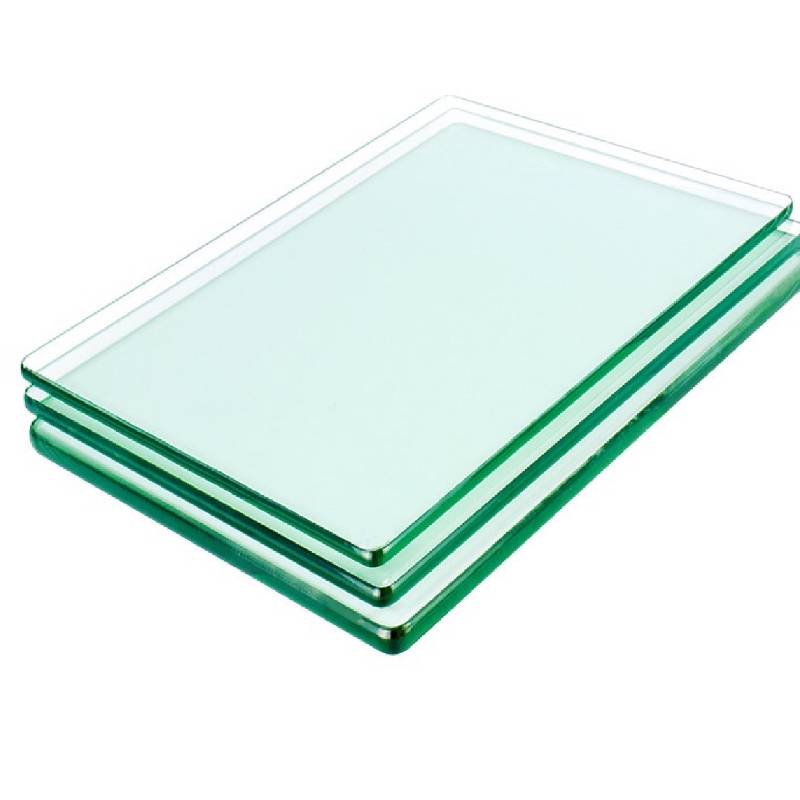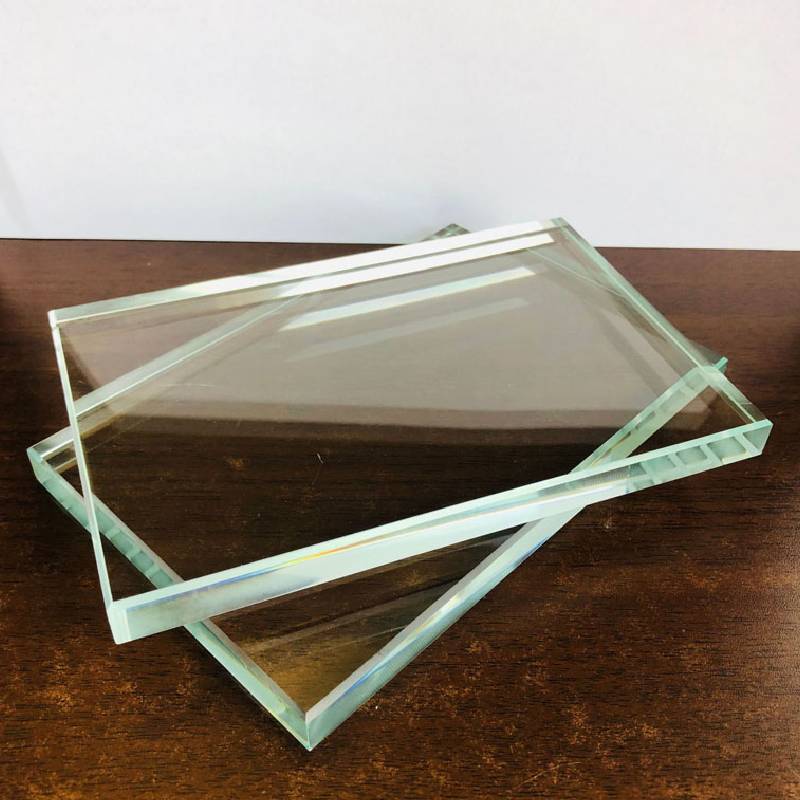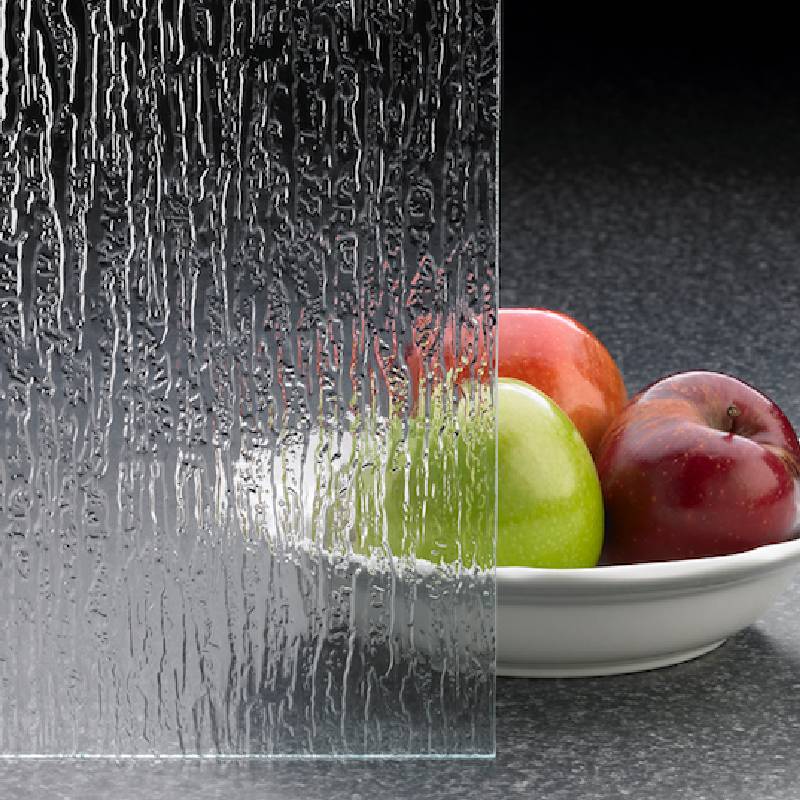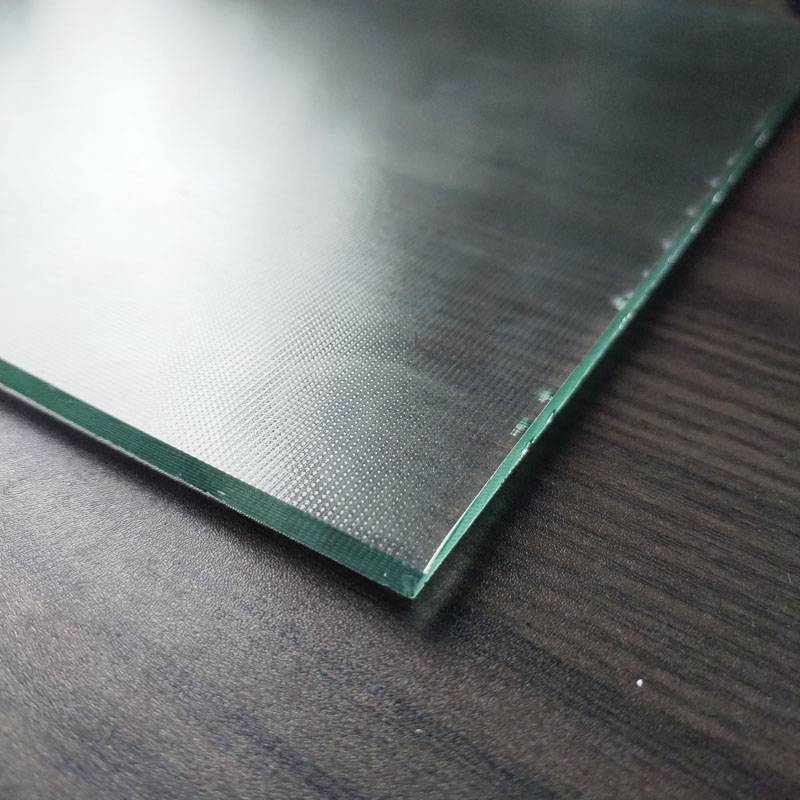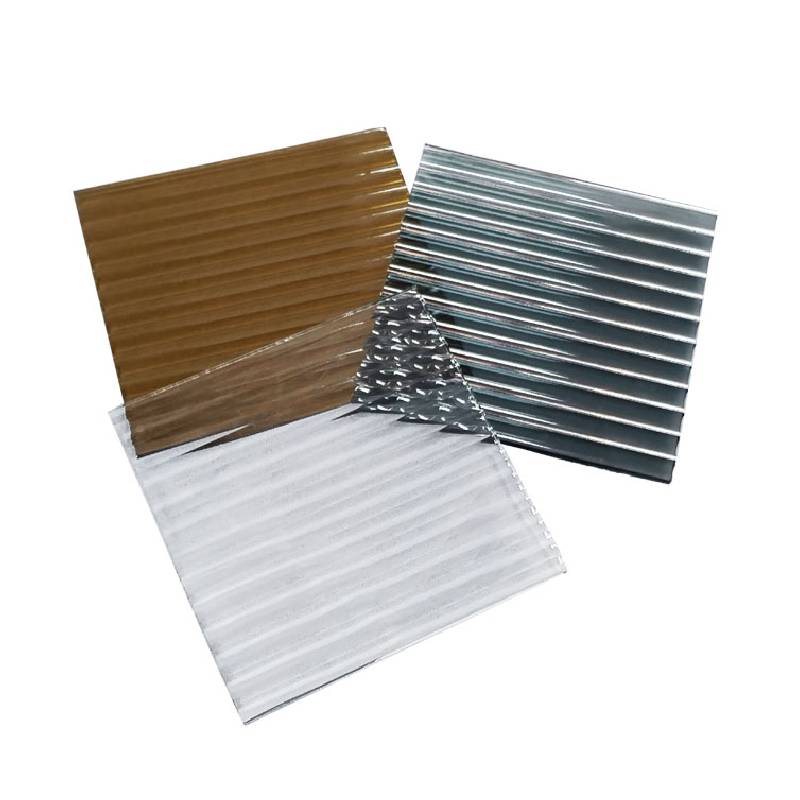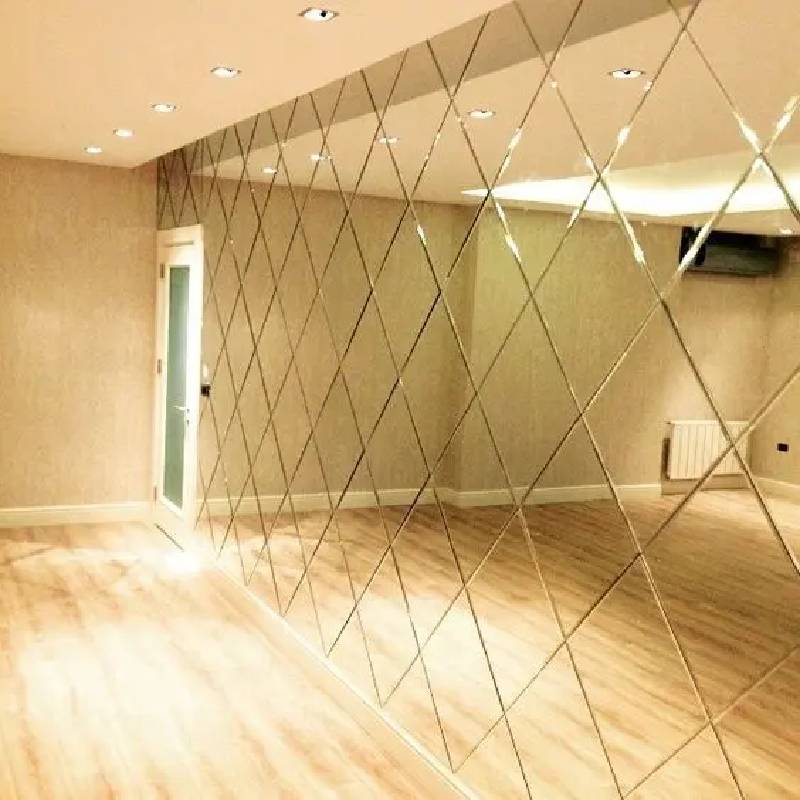Type: light blue reflective glass, dark blue reflective glass, light green reflective glass (French green reflective glass), dark green reflective glass (emerald green reflective glass), brown reflective glass, bronze reflective glass, European gray reflective glass, dark Gray reflective glass, black reflective glass, gold reflective glass, silver reflective glass,
Thickness: 4mm, 5mm, 6mm.
Size: 1830*2440, 2140*3300, 2140*3660, 2140*1650, 2250*3300, 2250*3660, 2440*3660.
Color reflective glass is manufactured through a process known as vacuum sputtering or magnetron sputtering. This method involves depositing metallic oxides onto the surface of clear or tinted glass in a vacuum chamber. By controlling the composition and thickness of these metallic coatings, manufacturers can achieve a wide range of colors and reflective properties.
During the sputtering process, the glass substrate is placed in a vacuum chamber along with targets made of the desired metal oxides, such as titanium, zinc, or silicon. High-voltage electrical currents are then applied to the targets, causing atoms to be ejected and deposited onto the glass surface. The thickness and composition of these coatings determine the color and reflective characteristics of the glass.
Several parameters play a crucial role in determining the performance and appearance of color reflective glass:
- Visible Light Transmission (VLT): VLT refers to the percentage of visible light that passes through the glass. Different applications may require varying levels of VLT to control glare and brightness indoors.
- Solar Reflectance: This parameter measures the ability of the glass to reflect solar radiation, helping to reduce heat gain and energy consumption in buildings.
-
- U-Value: The U-value indicates the rate of heat transfer through the glass. Low U-values signify better insulation properties, contributing to energy efficiency in buildings.
-
- Color Rendering Index (CRI): CRI measures the ability of a light source to accurately reveal the colors of objects compared to natural light. High CRI values are desirable for applications where color fidelity is important, such as museums or retail spaces.
-
Color reflective glass finds applications across various sectors, thanks to its aesthetic appeal and functional properties:
- Architectural Facades: Reflective glass facades add a contemporary touch to buildings while improving energy efficiency by reducing solar heat gain. The reflective surfaces also create dynamic visual effects, especially in urban landscapes.
- Interior Design: In interior spaces, color reflective glass can be used for partitions, doors, and decorative elements to enhance natural light distribution and create visually striking environments.
- Automotive Industry: Reflective glass coatings are utilized in automotive windows to improve visibility, reduce glare, and enhance the overall appearance of vehicles. Additionally, they help regulate interior temperatures, improving comfort for passengers.
- Electronics: Color reflective glass is integral to the production of display panels for electronic devices such as smartphones, tablets, and televisions. The reflective coatings enhance screen clarity and color vibrancy, providing an optimal viewing experience for users.
- Solar Panels: Some variants of color reflective glass are engineered for use in photovoltaic solar panels, where they serve as protective layers while also optimizing light absorption for electricity generation.
 αφρικανός
αφρικανός  Αλβανός
Αλβανός  Αμαρικά
Αμαρικά  αραβικός
αραβικός  αρμενικός
αρμενικός  Αζερμπαϊτζάν
Αζερμπαϊτζάν  Βάσκος
Βάσκος  Λευκορωσική
Λευκορωσική  Μπενγκάλι
Μπενγκάλι  Βόσνιος
Βόσνιος  Βούλγαρος
Βούλγαρος  καταλανικά
καταλανικά  Cebuano
Cebuano  Κορσικανός
Κορσικανός  Κροατία
Κροατία  Τσέχος
Τσέχος  δανικός
δανικός  Ολλανδός
Ολλανδός  Αγγλικά
Αγγλικά  εσπεράντο
εσπεράντο  Εσθονική
Εσθονική  φινλανδικός
φινλανδικός  γαλλική γλώσσα
γαλλική γλώσσα  Φριζ
Φριζ  Γαλικιανός
Γαλικιανός  Γεωργιανή
Γεωργιανή  Γερμανός
Γερμανός  Ελληνικά
Ελληνικά  Γκουτζαράτι
Γκουτζαράτι  Κρεολική Αϊτής
Κρεολική Αϊτής  hausa
hausa  Χαβάης
Χαβάης  Εβραϊκά
Εβραϊκά  Όχι
Όχι  Miao
Miao  ουγγρικός
ουγγρικός  ισλανδικός
ισλανδικός  igbo
igbo  Ινδονησιακά
Ινδονησιακά  ιρλανδικός
ιρλανδικός  ιταλικός
ιταλικός  Ιαπωνικά
Ιαπωνικά  Ιάβας
Ιάβας  Κανάντα
Κανάντα  καζακικά
καζακικά  Χμερ
Χμερ  Ρουάντα
Ρουάντα  κορεάτης
κορεάτης  κουρδικά
κουρδικά  Κιργιζικά
Κιργιζικά  ΤΒ
ΤΒ  λατινικά
λατινικά  λετονική
λετονική  Λιθουανικά
Λιθουανικά  Λουξεμβουργιανό
Λουξεμβουργιανό  Μακεδόνας
Μακεδόνας  Μαλγκάσι
Μαλγκάσι  Μαλαισίας
Μαλαισίας  Μαλαγιαλάμ
Μαλαγιαλάμ  μαλτέζος
μαλτέζος  Μαορί
Μαορί  Μαράθι
Μαράθι  Μογγόλος
Μογγόλος  Μιανμάρ
Μιανμάρ  Νεπάλ
Νεπάλ  Νορβηγός
Νορβηγός  Νορβηγός
Νορβηγός  Οξιτανός
Οξιτανός  Πάστο
Πάστο  περσικός
περσικός  Στίλβωση
Στίλβωση  Πορτογαλικά
Πορτογαλικά  Παντζάμπι
Παντζάμπι  ρουμανικός
ρουμανικός  Ρωσική
Ρωσική  Σαμόα
Σαμόα  Σκωτσέζικη Γαελική
Σκωτσέζικη Γαελική  Σέρβος
Σέρβος  Αγγλικά
Αγγλικά  Σόνα
Σόνα  Σίντι
Σίντι  Σινχαλά
Σινχαλά  Σλοβάκος
Σλοβάκος  Σλοβενική
Σλοβενική  Σομαλία
Σομαλία  Ισπανικά
Ισπανικά  Σουνδανός
Σουνδανός  Σουαχίλι
Σουαχίλι  Σουηδικά
Σουηδικά  Ταγκαλόγκ
Ταγκαλόγκ  Τατζικ
Τατζικ  Ταμίλ
Ταμίλ  Τατάρος
Τατάρος  Τελούγκου
Τελούγκου  Ταϊλανδός
Ταϊλανδός  τούρκικος
τούρκικος  Τουρκμενιστάν
Τουρκμενιστάν  Ουκρανός
Ουκρανός  Ουρντού
Ουρντού  Ουιγούρης
Ουιγούρης  Ουζμπεκιστάν
Ουζμπεκιστάν  Βιετναμέζικο
Βιετναμέζικο  Δεν πληρώνω τα οφειλόμενα
Δεν πληρώνω τα οφειλόμενα  Βοήθεια
Βοήθεια  γερμανοεβραϊκή διάλεκτος
γερμανοεβραϊκή διάλεκτος  Γιορούμπα
Γιορούμπα  Ζουλού
Ζουλού 

